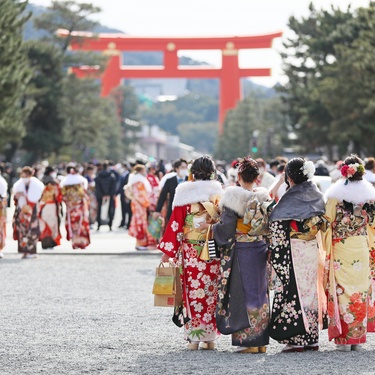
Cultures worldwide celebrate the time an individual moves from childhood into adulthood since this is a major transition. Becoming an adult means taking on new societal, cultural, and religious responsibilities. While all coming-of-age ceremonies celebrate the same thing at their core, how they go about this differs because every culture has unique adult traditions and responsibilities. This blog explores several fascinating coming-of-age ceremonies from different cultures around the world.
Bar and Bat Mitzvahs in Jewish Culture
In the Jewish faith, there’s a coming-of-age ceremony called the Bar Mitzvah for boys and the Bat Mitzvah for girls. Typically, a Bat Mitzvah occurs when a girl turns 12, while a Bar Mitzvah takes place at age 13. These occur at different ages for boys and girls because it signifies the age when a child becomes responsible for their actions and duties within the religion.
Both Bar and Bat Mitzvahs involve significant preparation, including learning Hebrew, mastering prayers, and studying the Torah. They emphasize the importance of commitment and dedication. During the celebration, friends and family attend to celebrate the special birthday with blessings, gifts, and a big party.
Quinceañera in Latin American Culture
A quinceañera marks a girl’s transition into womanhood on her 15th birthday and is celebrated extensively across Latin America. This celebration involves numerous traditions, such as the birthday girl’s extravagant dress and cultural dances.
Interestingly, quince dresses have evolved in many ways over the years due to shifts in style in general. For example, in the ’50s, pastels were popular, while the modern celebrant wears what makes her feel most comfortable.
Seijin no Hi in Japanese Culture
Seijin no Hi in Japan is an ancient tradition that translates to Coming of Age Day. Unlike the other celebrations we’ve mentioned, this doesn’t solely honor a single person. On the second Monday of January, all adults who’ve reached the age of 20 are honored by loved ones and members of the community.
During this celebration, those who have reached the age of 20 wear formal attire. Often, young women wear brightly colored kimonos, and men wear hakama pants or Western-style suits. The event begins with a ceremony hosted by local government offices, where officials deliver speeches offering encouragement and advice. During festivities, participants receive small gifts as blessing tokens for their future endeavors.
Cotillions in Philippine Culture
Cotillion comes from the Philippine culture and celebrates a Filipina’s 18th birthday. This highly anticipated event combines Filipino customs with modern influences, serving as both a rite of passage and a celebration of identity. The ceremony begins with a prayer to honor the debutante’s faith, followed by a candle-lighting ceremony and several waltz dances showcasing her grace and elegance.
During this celebration, the birthday girl usually has a court of 18 individuals who play a key role in her life. There are also speeches, a formal dinner, and dances with family and friends. A cotillion emphasizes the balance of honoring tradition while celebrating modern expression, highlighting the importance of community bonds and familial values.
Shared Themes Across Cultures
What’s fascinating about the many coming-of-age ceremonies from different cultures worldwide is that while each is unique, they all honor a person’s journey into a new life chapter. By celebrating and supporting a young person’s transition into adulthood, these ceremonies remind us that we are all connected through the human experience.
Bio: Casey is a passionate copyeditor highly motivated to provide compelling SEO content in the digital marketing space. Her expertise includes a vast range of industries from highly technical, consumer, and lifestyle-based, with an emphasis on attention to detail and readability.




















